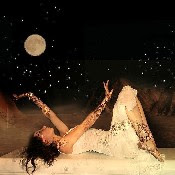VIEW OF THE HEBREWS; TRIBES OF ISRAEL IN AMERICA
Published and printed by Smith & Shute, Poultney, (VT.)
1825 - District of Vermont, To wit:
Published and printed by Smith & Shute, Poultney, (VT.)
1825 - District of Vermont, To wit:
"These be the days of vengeance. Yet a remnant shall return. He shall assemble the outcasts of Israel; and gather together the dispersed of Judah.'"
Extracts from Reviews of the First Edition.
"I have been in the sentiment of your book, that the natives of our country are the outcasts of Israel. It cannot well be doubted by any one, who has become acquainted with the religious ceremonies of the Indians, but that they have a manifest shadow of the Mosaic rituals. Most of the particulars you have mentioned in your book, I know to be facts; and were observed by the Seneca Indians.When I first came among them, the chiefs invited me to all their celebrations. For some time (when I could make it convenient) I attended, in hopes of obtaining information concerning their ceremonies. All the information I could obtain from their interpreter was, that all related to things their fathers taught them many years ago. "So our fathers worshiped the Great Spirit!" This was all the account they could give. I neglected their meetings.
After I read Dr. Boudinot's 'Star in the West,' I again attended their religious ceremonies, to see if I could discern what he had represented. In 1818, a general religious excitement commenced among the Senecas. They attempted to understand and reform their old religious rites, rather than receive Christianity. This brought together their wise men, who were best acquainted with their mysteries.They spent much time to investigate their religion, its origin and what it taught, and to what it would avail. They found themselves involved in darkness. Of the meaning of the words they used in their dances, and divine songs, they were wholly ignorant.
They used the words, Y-O-He-Wah, and Hal-le-lu-yah, as Dr. Boudinot has represented of other Indians. They became dissatisfied with their old rites, and consented that they would take the book which the white people call the word of God, to throw light on their path. This was the commencement of Christianity among the Senecas. This in its progress brought in two who had officiated as high priests in their religious ceremonies. With these I have had frequent opportunities. They have given me, I believe, an unreserved account of all they know of their ancient religion. Their wish has been to obtain information whether any thing is found in our scriptures similar to their religion.
They have been firmly persuaded that they are the people of God; but that they have lost their way, and are bewildered in darkness. They call themselves, Hung-gwa-o-way; --i.e. the real people. In all their rites which I have learned from them, there is certainly a most striking similitude to the Mosaic rituals.
Their feasts of first fruits; feasts of ingathering; day of atonement; peace offerings; sacrifices. They build an altar of stone before a tent covered with blankets; within the tent they burn tobacco for incense, with fire taken from the altar of burnt offering.
All who have seen a dead human body are considered unclean eight days; which time they are excluded from the congregation.
These Senecas observe their separations of females, as you notice of other Indians in your book. These Indians are well acquainted, that formerly places like cities of refuge existed among them. An old chief showed me the boundaries of one of them. I could fill sheets with details; but it would be unnecessary.
I remain yours in the bonds of the Gospel, Jabez B. Hyde.
Rev. Ethan Smith.
From the Rev. Dr. Proudfit, of Salem, NY, Salem, February 18, 1825.

No comments:
Post a Comment